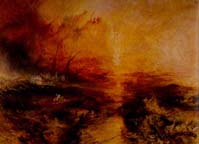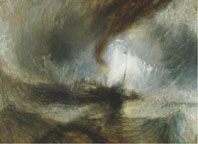In his "The Decay of Lying", Oscar Wilde speaks out against what he sees as man's ever deeper fall into the grasp of realism. Wilde builds his critique as a conversation between the two characters of Vivian and Cyril. As Vivian reads the article that she has written to her intruding friend Cyril, she begins to discuss a series of contemporary artists and how they have lost their grasp on the art of lying, artistic versus literal representation. However, Cyril eventually interrupts Vivian and asks her about two authors, Balzac and George Meredith, whom Vivian herself enjoys. Vivian responds of Balzac,
"All Balzac's characters," said Baudelaire, "are gifted with the same ardour of life that animated himself. All his fictions are as deeply coloured as dreams. Each mind is a weapon loaded to the muzzle with will. The very scullions have genius." A steady course of Balzac reduces our living friends to shadows, and our acquaintances to the shadows of shades. His characters have a kind of fervent fiery-coloured existence. They dominate us, and defy scepticism. One of the greatest tragedies of my life is the death of Lucien de Rubempré. It is a grief from which I have never been able completely to rid myself. It haunts me in my moments of pleasure. I remember it when I laugh. But Balzac is no more a realist than Holbein was. He created life, he did not copy it.
Oscar Wilde here denounces his era's obsession with rendering subjects ever more realistically. In fact, this obsession with photographic realism can be seen in much of European art dating back several centuries. There existed in Western art, since the times of Christ, a dedication to the ever more lifelike renderings. Painters like Cimabue, Giotto, Bellini, da Vinci, Raphael, Titian, Van Eyck, El Greco, Rembrandt, and others (all of whom represent the great masters or orthodoxy in Western art) attempted to paint or create subjects as close to life as possible. Each artist built on the breakthroughs of his predecessors so that, with each generation, Western art approached the photographic.
However, this trend changed with the perfection of painting. Perfection not in the sense of aesthetic perfection, but in the sense that painters figured out the geometrics of the world and how to represent it on canvas accurately. Yet, after this perfection, Western art does exactly what Wilde here implores it to; artists begin to not merely represent life, but to create it, to not just paint what everyone else sees, but to paint what they see. Around the turn of the century (at the close of the Victorian Era) Western art moved away from the realistic to forms like Cubism, Expressionism, and Surrealism, and Abstraction. Artists like Picasso, Delaunay, Munch, and Dali joined the ranks of the great masters, not for how realistically they could paint their subjects, but instead for how they could take an image and warp it.



Three paintings by Turner: (From left to right): Slave Ship; Rain, Steam, Speed; and Snow Storm: Steamboat off a Harbour's Mouth. [Click on thumbnails for larger images.]
Though the shift from realism to abstraction came after the Victorian Era, we can see its beginnings in some of the era's artists. Ironically, one of these artists is J.M.W Turner, in whose defense Ruskin wrote numerous works. Looking through Turner's paintings we find the very departure from naturalism that Wilde calls for. In works like Slave Ship; Rain, Steam, Speed; Shade and Darkness — the Evening of the Deluge; and Snow Storm: Steamboat off a Harbour's Mouth, Turner takes an image (a ship, a train, a storm) and gives us an impression of the object, then warps it in some way, causing us, not to see the object for only itself, but to feel the scene interacting with the central subject. Turner takes reality and makes it his own, creating around it something that was not there — exactly what Wilde calls for in "The Decay of Lying" and exactly what Western art does around and after 1900.
Questions
What does the fact that conservative critics hated Turner's non-naturalistic works say about Wilde's claims on the decay of lying? Can the views commonly held by a period's critics be used to explain the views of a population as a whole?
In the above paragraph, I claim that Turner does many of the very things Wilde calls for (He paints many subjects, he uses many different styles, he paint what he sees and not just what is there). Yet later in "The Decay of Lying", Wilde himself seems to criticize Turner's work. He says,
Nobody of any real culture, for instance, ever talks nowadays about the beauty of a sunset. Sunsets are quite old-fashioned. They belong to the time when Turner was the last note in art. To admire them is a distinct sign of provincialism of temperament. Upon the other hand they go on. Yesterday evening Mrs. Arundel insisted on my going to the window, and looking at the glorious sky, as she called it. Of course I had to look at it. She is one of those absurdly pretty Philistines to whom one can deny nothing. And what was it? It was simply a very second-rate Turner, a Turner of a bad period, with all the painter's worst faults exaggerated and over-emphasized.
What in Turner does Wilde find fault with? If Turner's style is not what Wilde truly has in mind when he calls for the revival of lying, what does he really want?
Wilde builds his critique around the conversation of Vivian and Cyril about Vivian's article, entitled "The Decay of Lying: A Protest." Why does Wilde do this? He could have simply published Vivian's article as the whole piece and omitted the two characters and their conversation. What does he gain from including them?
In the opening of his piece, Wilde includes a description of where the conversation between Cyril and Vivian takes place. Wilde gives use a sense of setting. Ruskin's "Traffic," in which he addresses a large crowd, does something similar. Though "Traffic" is a speech given by Ruskin at an actually location and not an imaginary setting like Wilde's, what does the inclusion of setting add or detract from each work? What does it allow us as reader's to do that other works like "A Defence of Cosmetics" do not?
Last modified 23 April 2009